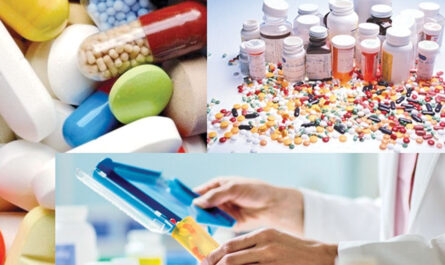What is Medical Device Vigilance?
As healthcare technology continues to advance at a rapid pace, medical devices play an increasingly important role in diagnosis, treatment and patient care. From surgical robots and imaging equipment to implanted medical devices like pacemakers, these tools have allowed clinicians to provide lifesaving care in innovative new ways. However, with these benefits also comes the responsibility to continuously evaluate device performance and monitor patient outcomes over the long term. This ongoing process of medical device monitoring and oversight is known as medical device vigilance.
Medical Device Vigilance refers to activities undertaken to monitor the performance and safety of medical devices that have been authorized for use. This includes collecting and reviewing information from multiple post-market sources like adverse event reports, scientific literature, registries and field safety notices. Through vigilance programs, regulatory bodies aim to detect, assess and prevent any issues related to medical device use, malfunctions or failures that could impact patient health and safety. Let’s examine some key aspects of medical device vigilance in more detail.
Reporting Adverse Events
One of the most important components of vigilance is adverse event reporting. An adverse event refers to any untoward medical occurrence in a patient or user that may be related to the use of a medical device but does not necessarily have a causal relationship. Clinicians, facilities and manufacturers are required to report any serious injuries, deaths or unanticipated incidents involving devices to their national regulatory agency. Reports provide real-world data on device performance over time that can identify problems not evident during pre-market testing with smaller sample sizes and shorter follow-up periods. They help assure the safety, effectiveness, and performance of devices remain acceptable after market entry.
Reviewing Scientific Literature
Regulators also conduct ongoing reviews of peer-reviewed scientific literature databases related to authorized medical devices. Reports of adverse events, complications, device malfunctions or limitations identified through published studies and case reports are assessed. This helps uncover safety issues that may warrant further investigation or potential corrective actions by manufacturers to mitigate risks and prevent patient harm. It also enables learning from shared experiences with devices globally. The literature review process is an important supplement to adverse event reporting since not all unplanned outcomes will necessarily get captured in formal submissions.
Monitoring Through Registries and Databases
For high-risk or novel devices used long-term like implants, active post-market registries and databases play a key role in ongoing vigilance. These structured systems for collecting specified data on all registered patients receiving a particular device allow large-scale surveillance and analysis of real-world outcomes. Issues that only manifest after a device has been in widespread use for an extended period may be identifiable through longitudinal registry monitoring but missed through individual adverse event report analysis alone. Registries also facilitate more targeted follow-up of specific patient subgroups as needed. Data obtained help ensure the benefit-risk assessment for devices remains favorable as technology and clinical experience evolve over time.
Conducting Field Safety Corrective Actions
When vigilance activities uncover safety issues warranting prompt attention, field safety corrective actions may be initiated by manufacturers in consultation with regulators. This could involve issuing safety alerts and field safety notices to inform healthcare facilities and users of important device-related hazards identified. More extensive actions may involve device modifications, software upgrades or recalls if the issue poses significant risks that cannot be mitigated through other means. Corrective actions aim to minimise potential risks to patients while allowing continual device innovation that improves medical care. However, there must be careful oversight to ensure proposed mitigation strategies are adequate and timely implemented as needed to protect public health.
The Role of Multinational Collaboration
Given that many devices are used globally, international cooperation enhances the effectiveness of medical device vigilance activities. Problems identified through reporting in one country may indicate need for heightened monitoring elsewhere. Multinational partnerships allow for data sharing across registries to pool insights from larger populations. They enable coordinated field corrective actions when issues span multiple healthcare systems. Supranational organizations facilitate knowledge exchange between regulatory authorities to support consistent, high-quality oversight of devices throughout their lifecycles. With medical technology becoming increasingly interconnected worldwide, ongoing collaboration ensures patient safety remains a priority without impediments caused by geographic or political boundaries.
Through well-designed monitoring programs and cross-border partnerships, medical device vigilance aims to uphold standards of care in an era of rapid medical advancement. It helps balance accessibility of innovative solutions with responsible oversight to confirm devices continue delivering benefits safely as intended. While pre-market testing establishes a baseline, ongoing real-world surveillance is critical due to limitations of pre-authorization evaluation and the difficulties anticipating all outcomes from dynamic healthcare delivery over long periods. With devices touching more lives each day, vigilance will remain integral to building public trust and protecting patients worldwide in the years ahead.
*Note:
1. Source: Coherent Market Insights, Public sources, Desk research
2. We have leveraged AI tools to mine information and compile it


